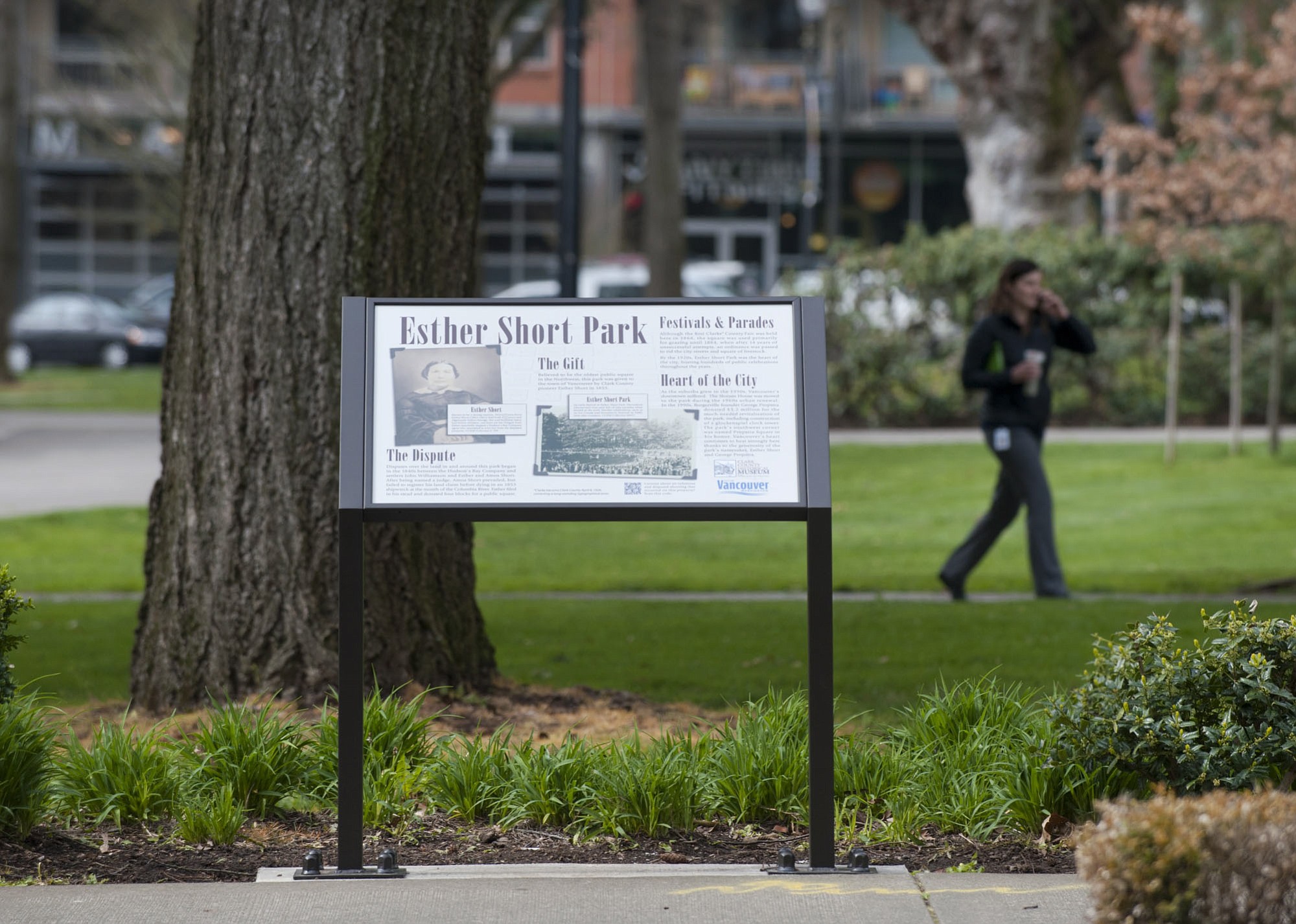Get Involved
• Are there other historic sites you’d like to learn more about? Email vancmo@cityofvancouver.us with your ideas.
While walking around downtown Vancouver, you might learn a thing or two about the area’s history without having to step inside a museum or nearby Fort Vancouver.
Four interpretive panels were recently installed near Esther Short Park, the Kiggins Theatre, the Slocum House and where the Witness Tree once stood.
The panels, which all face walkways, are part of an effort to make local history more accessible and engaging, said Jan Bader, Vancouver’s program and policy development manager. She’s part of the Clark County Historic Preservation Commission, which keeps a registry of historic sites.
“There’s a lot of cool history in this city that’s not related to Fort Vancouver,” Bader said.
A state law passed in 2005 requires that one dollar from every recording fee collected by the county auditor be used to promote local history. The county turned those collected dollars into grant money that could be used for community projects, Bader said. It’s the same pool of money used for the interpretive panels at Heritage Square, otherwise known as Block 10, in downtown Vancouver. The Clark County Historical Museum did the research and provided the text and photos for the panels. The research, design, fabrication and installation cost $10,000.
“I can’t wait to have the opportunity to do more of these,” said Brad Richardson, experience coordinator at the museum, who helped write the text. “It allows for people to start to see the value in historic buildings.”
Distilling the most important historical facts into a few words that fit on a panel was no easy task, Richardson said. Putting together the Kiggins Theatre panel began with 415 articles, biographies, publications and city council recordings. The Kiggins Theatre was developed by John P. Kiggins, who served nine terms as the city’s mayor.
The Esther Short Park panel was the most difficult because there are various versions of stories about the Short family, Richardson said, which includes Esther Short and her husband Amos, along with their 12 children. The park land was donated to the city by Esther Short and later revived by Burgerville founder and philanthropist George Propstra.
The panel for the Witness Tree describes where the tree — a marker for Main Street — once stood before it fell into the Columbia River.
Richardson would like to work on more panels for sites such as the Hidden House, 100 W 13th St., which currently houses a Greek restaurant, and the Vancouver Telephone Exchange building around the corner.
“At this point I don’t have any plans to do any more, but who knows?” Bader said.
Mobile app coming
By summer’s end, information about Clark County historic sites will be just a few clicks away on a mobile phone. The historic preservation commission got a $10,000 state grant to develop a mobile app that will have information and photos about historic sites that people can pull up while they’re walking, biking or driving around.
It’s an alternative to printed pamphlets and maps, which don’t have the space for all 70 some sites, said county planner Jacqui Kamp. The app can be constantly refreshed with new information. Exactly what the app will look like is still being fleshed out, but it will work on both Android and iPhone platforms.
“We’re hoping that this format will reach more people than the pamphlet was reaching,” Kamp said.
She aims to have it ready for download by the end of September.





